Special Report
20 Companies That Dominated Corporate America in the 80's
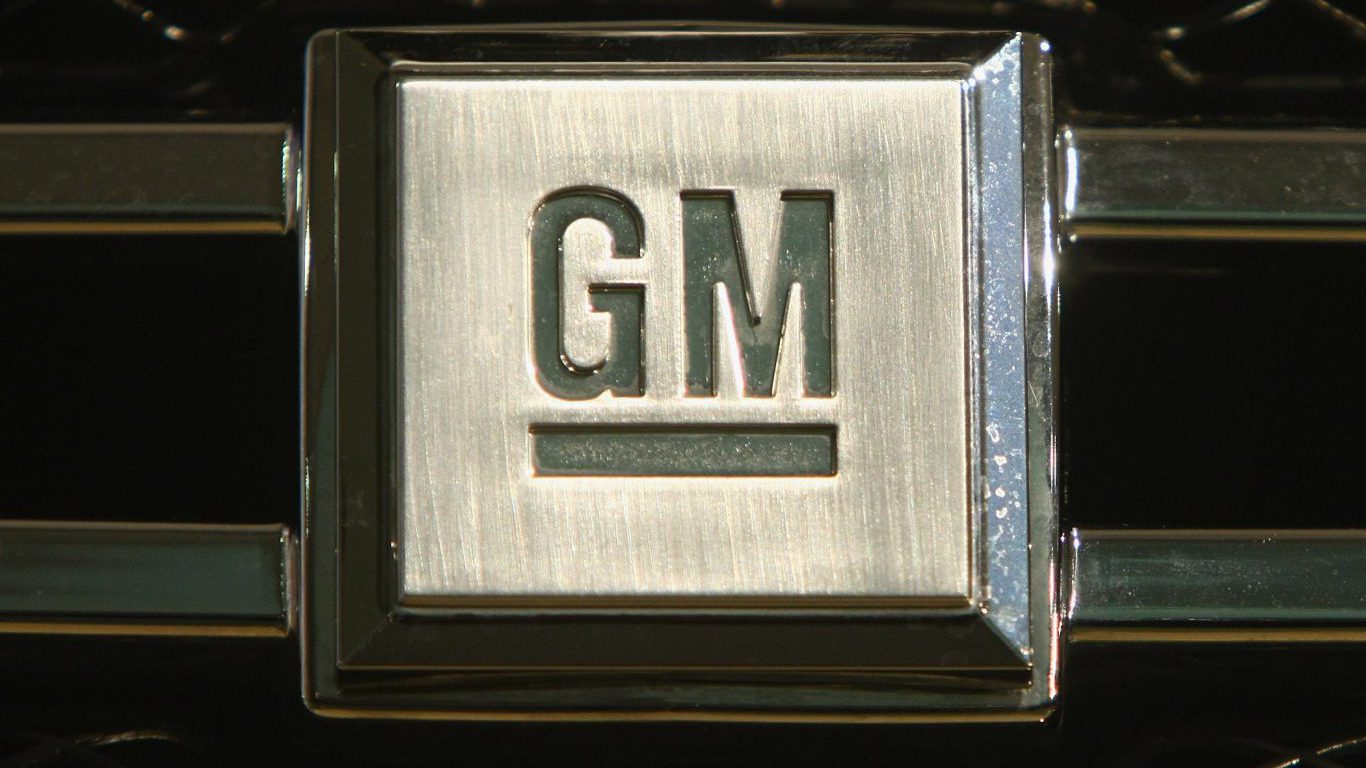
Published:
Last Updated:

When it comes to the 1980s, that decade had multiple defining moments across pop culture, technology, fashion, and global affairs. Along with the Berlin Wall falling and the end of the Cold War, the arrival of cable channels like CNN and MTV would help define generations. The 80s were also when computers started arriving in every home and video games became a global phenomenon.
Along with everything else in the 1980s, the arrival of yuppie culture helped fuel massive corporate growth. While the list of companies that dominated corporate America during this time will look pretty familiar, there are a few names that make their first appearances on the Fortune 500.

It should be no surprise that General Motors sits high on a list of companies that dominated corporate America in the 1980s. A titan in the automobile space, GM enjoyed record profits throughout this period. The release of the Chevrolet Camaro IROC-Z, GMC pickup trucks, and the Pontiac Fiero all pushed profits.
Additionally, GM launched the now-defunct Saturn brand with a heavy focus on driving customer satisfaction. With Saturn and other vehicles, GM pushed heavily into automated manufacturing which helped propel profit. GM was also able to save money by switching from V8 to V4 and V6 engines.
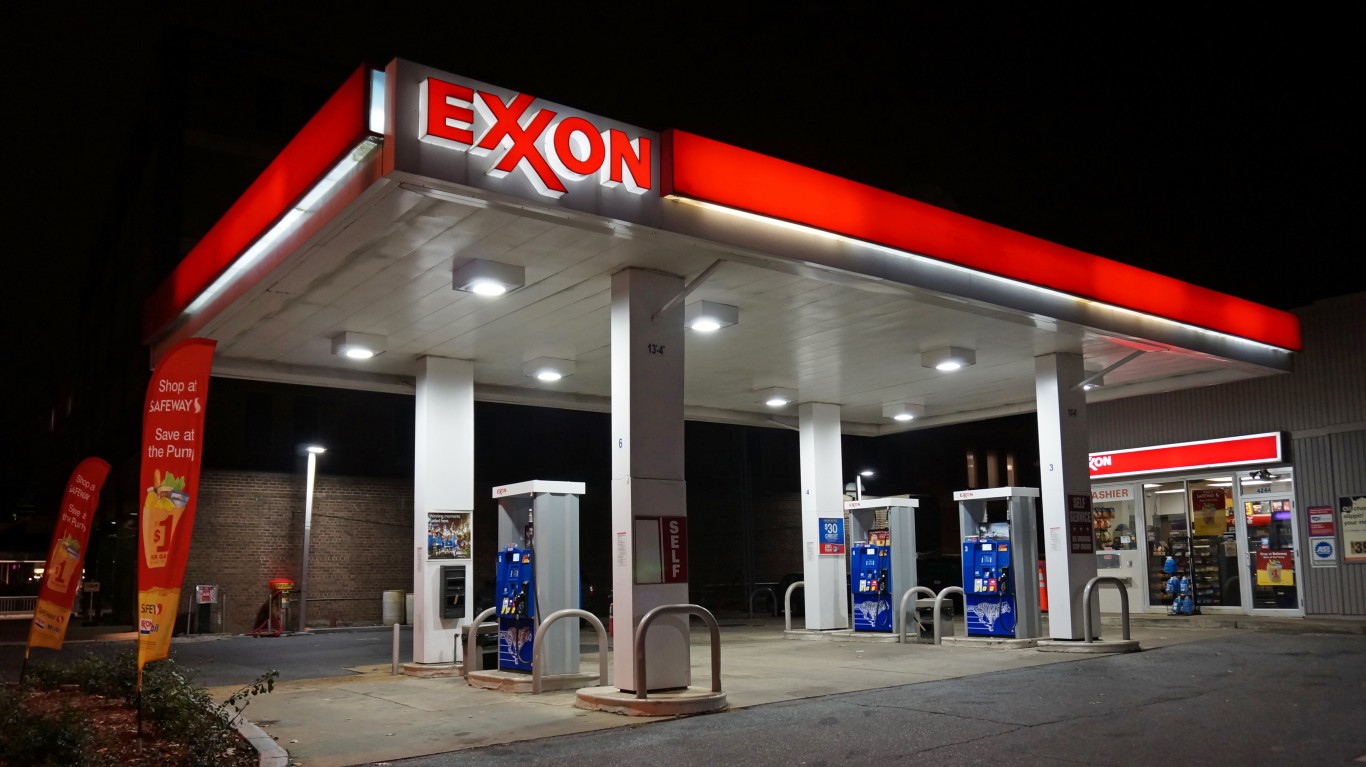
With oil prices hitting record highs coming out of the 1970s, Exxon saw huge profits in the early 1980s. Profits grew so fast that Exxon was able to finally overtake General Motors on the Fortune 500 in 1980 – 1986. Expanded operations in the North Sea, Soviet Union, and China helped Exxon become a truly global oil brand.
Of course, the biggest Exxon news in 1989 occurred when it merged with Mobil. This merger would create Exxon Mobil, the largest oil company in the world. Exxon did suffer from terrible PR in the late 1980s which impacted revenue after the Exxon Valdez oil spill off the coast of Alaska.
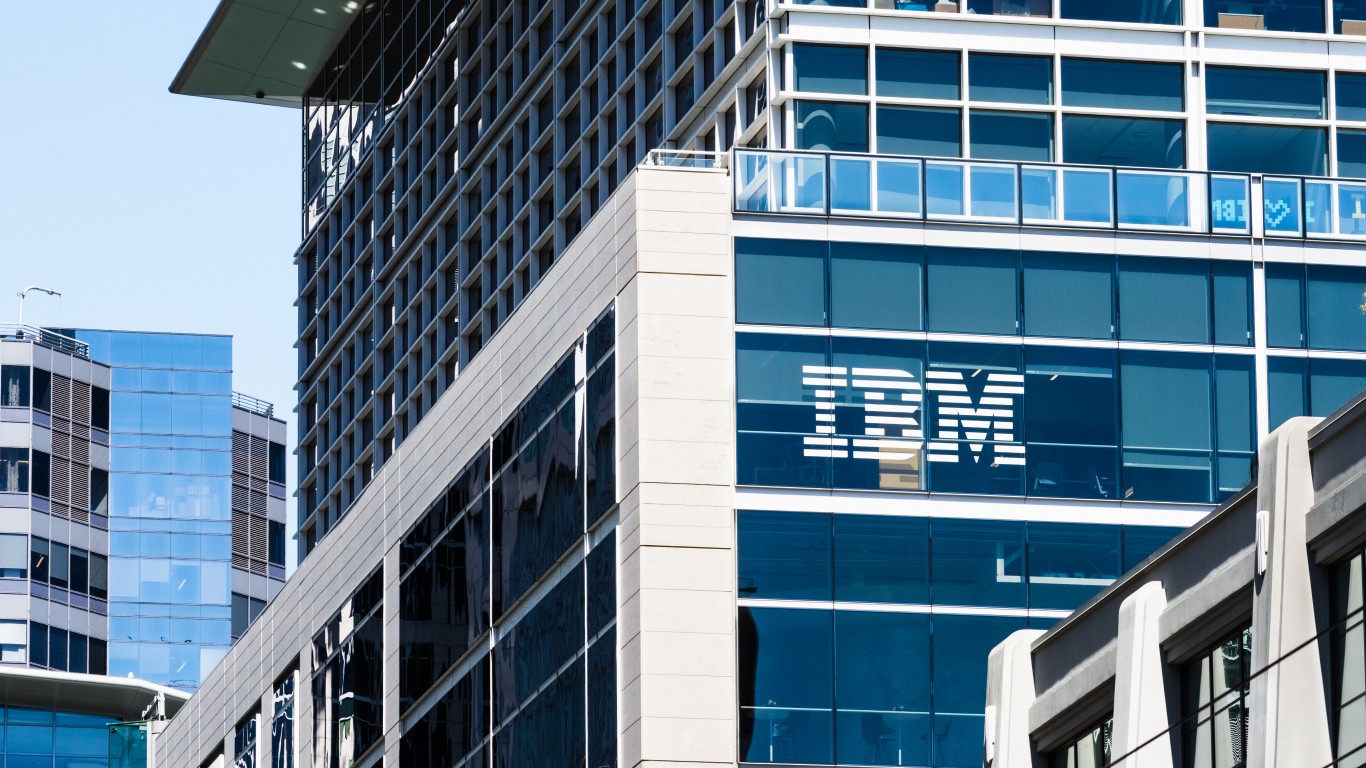
Even though IBM was hesitant to enter the consumer PC market, 1981 was a momentous year for the company. The introduction of the IBM 5150 Personal Computer would drive the software industry forward forever. It was the release of IBM PC DOS 1.0 that helped grow IBM throughout the early 1980s.
It was during this era that IBM recognized that it could make significant revenue in the consumer space. Additional models like the IBM PC/AT and AS/400 would help drive even more growth for the company. IBM’s influence on the computer market during this era cannot be overstated.

The 1980s were a turbulent time for AT&T, but also a period of significant growth. The 1984 divestiture as a result of the government’s antitrust lawsuit would force AT&T to break up its Bell companies. However, AT&T was able to then focus on long-distance and cellular telephone services. In hindsight, this Bell breakup was the best thing for AT&T as it became a huge player in the telecommunications industry.
By acquiring Western Electric in 1984 as a result of the divestiture process, AT&T was able to control equipment manufacturing. As a result, AT&T was able to provide customers with reliable equipment that helped increase its market share significantly.

Another Fortune 500 staple, DuPont had several major moments in the 1980s that drove increased revenue. Expanding into specialty chemicals increased DuPont’s margins. Popular chemicals like Kevlar, Nomex, and Teflon were all created during this period. Kevlar, in particular, is well known for being the backbone of bulletproof vests worn by police and military personnel.
During the 1980s, DuPont also acquired Conoco, Inc. which was the largest corporate merger in U.S. history. In 1986, DuPont introduced the popular Stainmaster carpet, the best-selling carpet brand in the U.S.

The 1980s were a solid period of growth for Ford and allowed it to comfortably remain a Fortune 500 top 10 brand. The introduction of the Ford Taurus in 1985 was a major moment and would be Ford’s best-selling model for years to come. The 1980 launch of the updated Ford Escort was hugely popular due to the move to front-wheel drive.
Another big moment for Ford in the 1980s was the release of the moving assembly line. A surprising highlight for Ford in this era was a 1981 partnership with Mazda. Ford was able to learn from Mazda to manufacture more efficient engines.
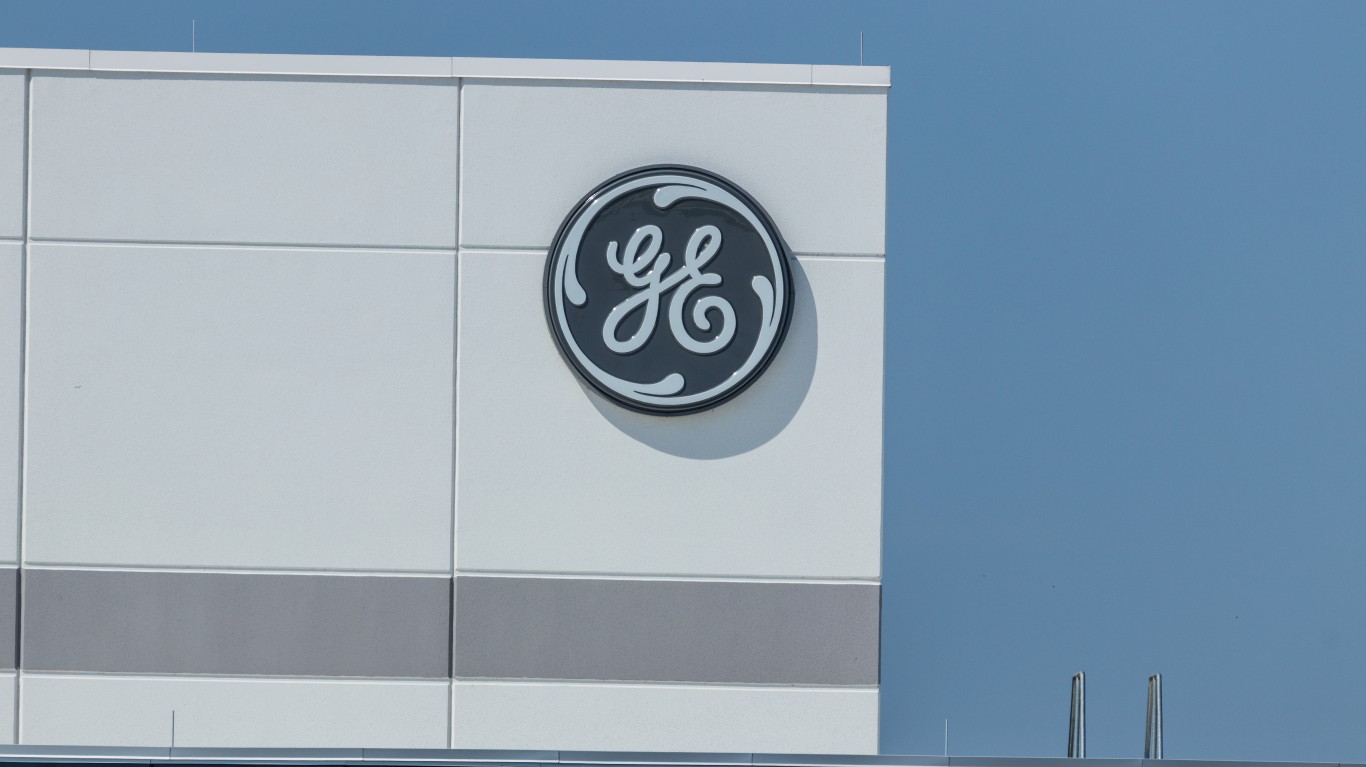
The 1980s saw big changes for General Electric as it transitioned into an international conglomerate. Most notable about this era was the introduction of Jack Welch as the company CEO in 1981. Welch is widely considered one of the most prominent CEOs in U.S. corporate history.
Welch oversaw the purchase of RCA in 1986, which gave GE a presence in electronics, media, audiovisual equipment, and the NBC network. He also prioritized its GE Capital division, which was a financial services group dedicated to commercial business lending and insurance.
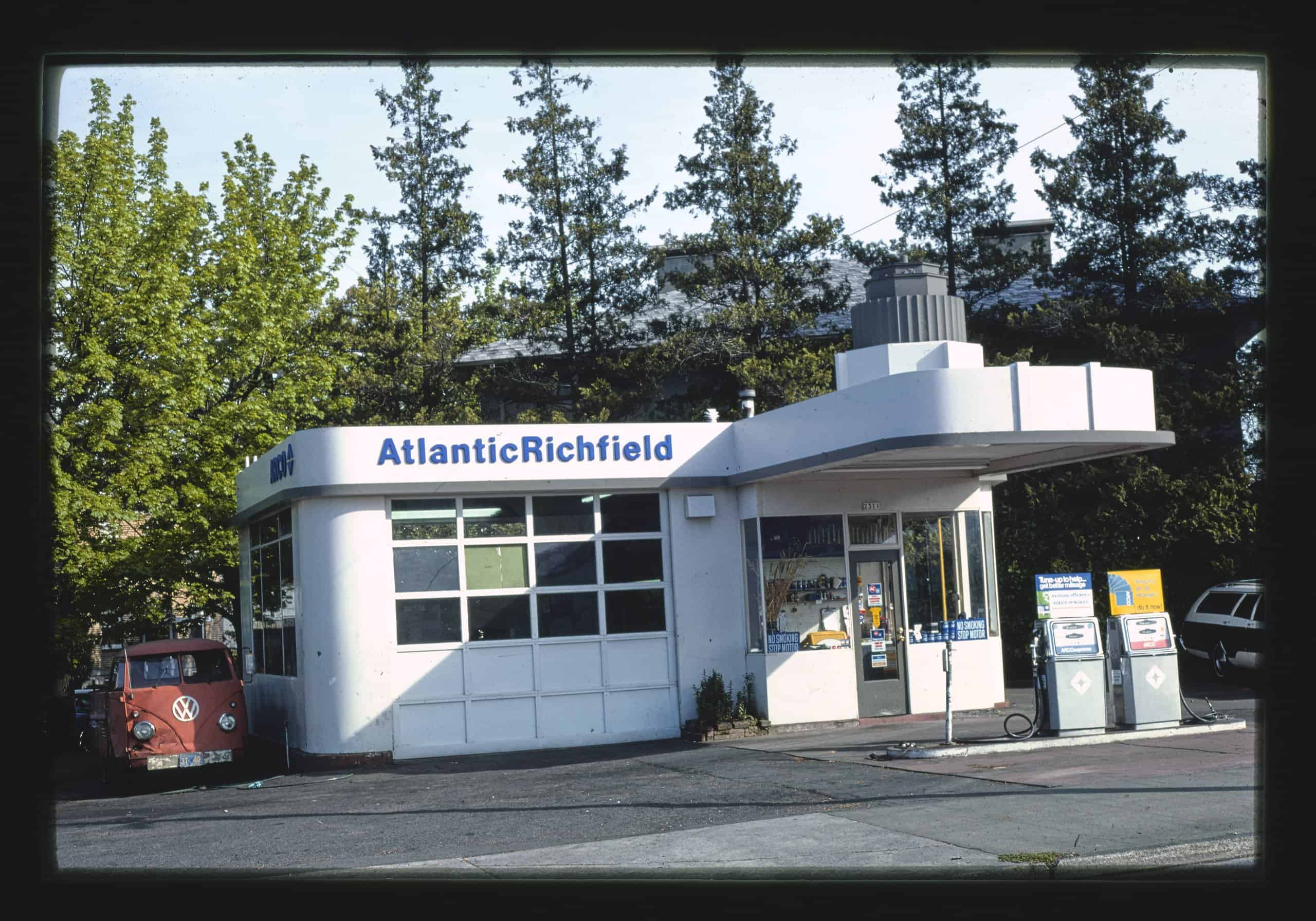
Moving into the upper echelon of corporate America, Atlantic Richfield was a major player in Alaskan oil production in the 1980s. Atlantic Richfield, or ARCO, was a key force in supplying domestic oil during this era.
The acquisition of Anaconda Copper Company in 1977 had major dividends in the 1980s. By diversifying its portfolio, ARCO drove major profits across both oil and mining. Though ARCO did reduce its workforce pretty significantly in the 1980s, it was still able to concentrate on its areas of highest profitability.

The 1980s were a major period for United Technologies Corporation or UTC. During this time, the company focused on four groups: aircraft engines, flight systems, building systems, and industrial products. The 1979 acquisition of Carrier Corporation gave United a major opportunity in the 1980s to expand itself in the climate control market with HVAC systems.
Driving growth in the 1980s for UTC were major developments in aerospace. Developing aircraft engines with lower emissions helped drive UTC into sustainability and comfort. The purchase of Pratt & Whitney would also drive the introduction of new aircraft engines that saw wide use in commercial airlines.

Interestingly enough, Tenneco Automotive was a staple of the Fortune 500 during the 1980s even as it broke itself apart. During this period, Tenneco divested itself of all of its businesses except for its automotive group. The result is that Tenneco was able to focus on steering and suspension components, emission control technologies, and ride control systems.
Additionally, Tenneco had a major role in exhaust systems and suspension components, which played a major role in its bottom line. Through its partnerships with major vehicle brands, Tenneco strengthened its position during the 1980s and created global reach.

One of the biggest oil brands in the U.S., Texaco was a top 10 figure on the Fortune 500 across the 1980s. However, the biggest 1980s news for Texaco was its 1985 legal loss to Pennzoil. The largest civil verdict in U.S. history, Pennzoil was awarded $10.53 billion against Texaco after attempting to purchase Getty Oil.
The legal trouble would lead Texaco to file for bankruptcy protection in 1987. To maintain its business, Texaco would restructure, reduce debt, and rid itself of non-core business assets. It would emerge from bankruptcy one year later as a financially healthy company.

The 1980s were both positive and troublesome for Chrysler, one of the top 3 U.S. auto brands. In 1980, the U.S. government had to provide a billion-dollar loan to Chrysler to help it withstand financial difficulties. Between this loan and the arrival of CEO Lee Iacocca, Chrysler underwent significant cost-cutting measures and restricted the business to reverse its economic misfortune.
The arrival of the Plymouth Voyager minivan in 1984 was a significant opportunity for Chrysler. By capitalizing on its arrival, it helped restore the company to profitability and grow its market share.
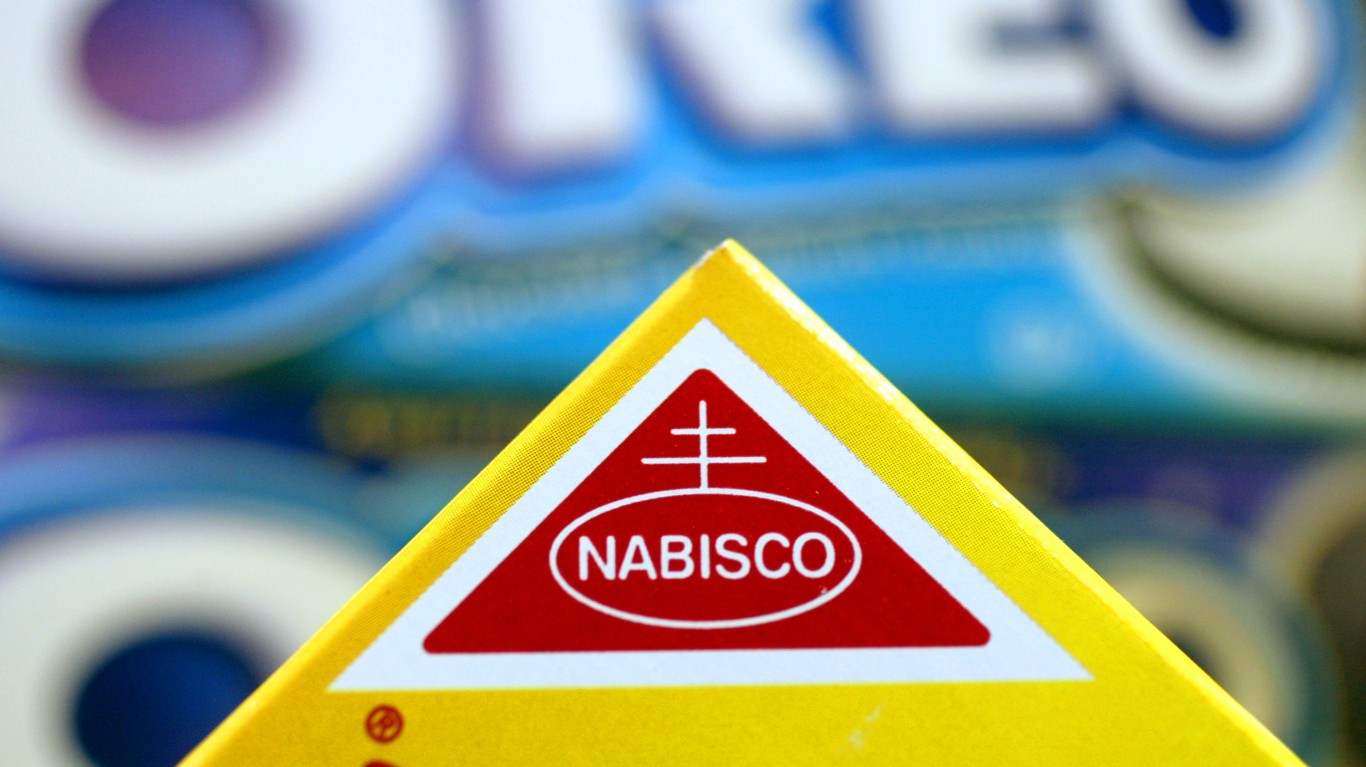
Solidifying itself a strong position on the Fortune 500 by the late 1980s, Nabisco is a staple food name. In 1981, Nabisco merged with Standard Brands to form Nabisco Brands only to merge with RJR Tobacco Company in 1985. As a result of this merger, Nabisco would be known as RJR Nabisco.
The 1980s saw the introduction of popular foods like Ritz Crackers, Honey Maid graham crackers, Teddy Grahams, and Wheat Thins. With these brands on store shelves, Nabisco grew significantly in the 1980s becoming a major force in the snack food market.
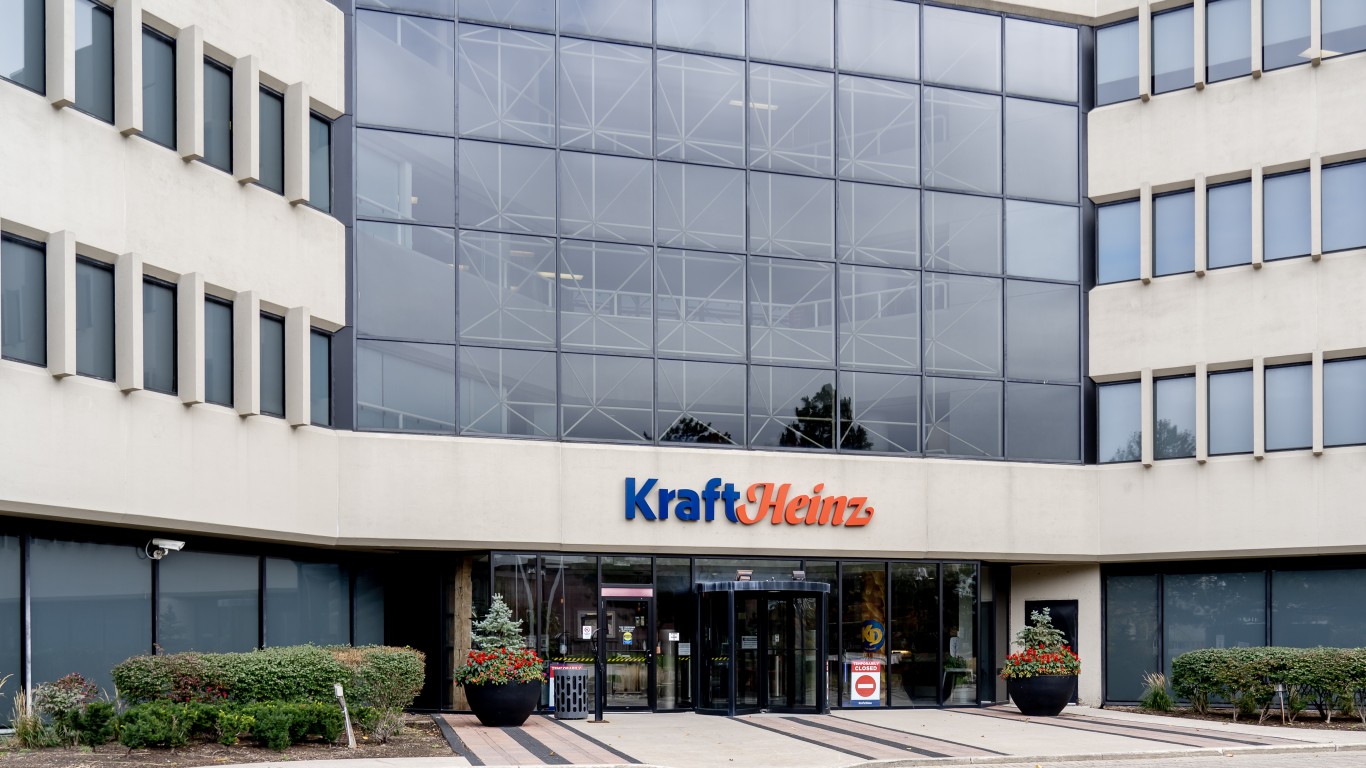
Hanging out as one of the top 30 Fortune 500 brands across the 1980s, Kraft’s importance in the food world is well documented. The biggest news in the 1980s for Kraft was an acquisition by Philip Morris Companies in 1988. This move gave Kraft more market reach and a broader distribution network.
Business moves aside, Kraft relied heavily on new products during this period including Jell-O pudding snacks, Capri Sun, Velveeta Shells & Cheese, and Lunchables. As part of these intros, Kraft also doubled down on product quality during this time as it reconfigured many product flavors in the 1980s.

One of the biggest consumer brands in the U.S., Procter & Gamble in the 1980s saw significant global expansion. During this time, P&G looked to break in with new audiences around the globe and continue to diversify its revenue streams. Among its bigger news, the 1985 acquisition of Richardson-Vicks gave P&G more shelf space with over-the-counter healthcare products.
These products include Vicks cough and cold remedies, which is still a popular brand today. Additionally, P&G introduced Tide with Bleach, Pampers Ultra diapers, and Crest Tartar Control toothpaste during this period.
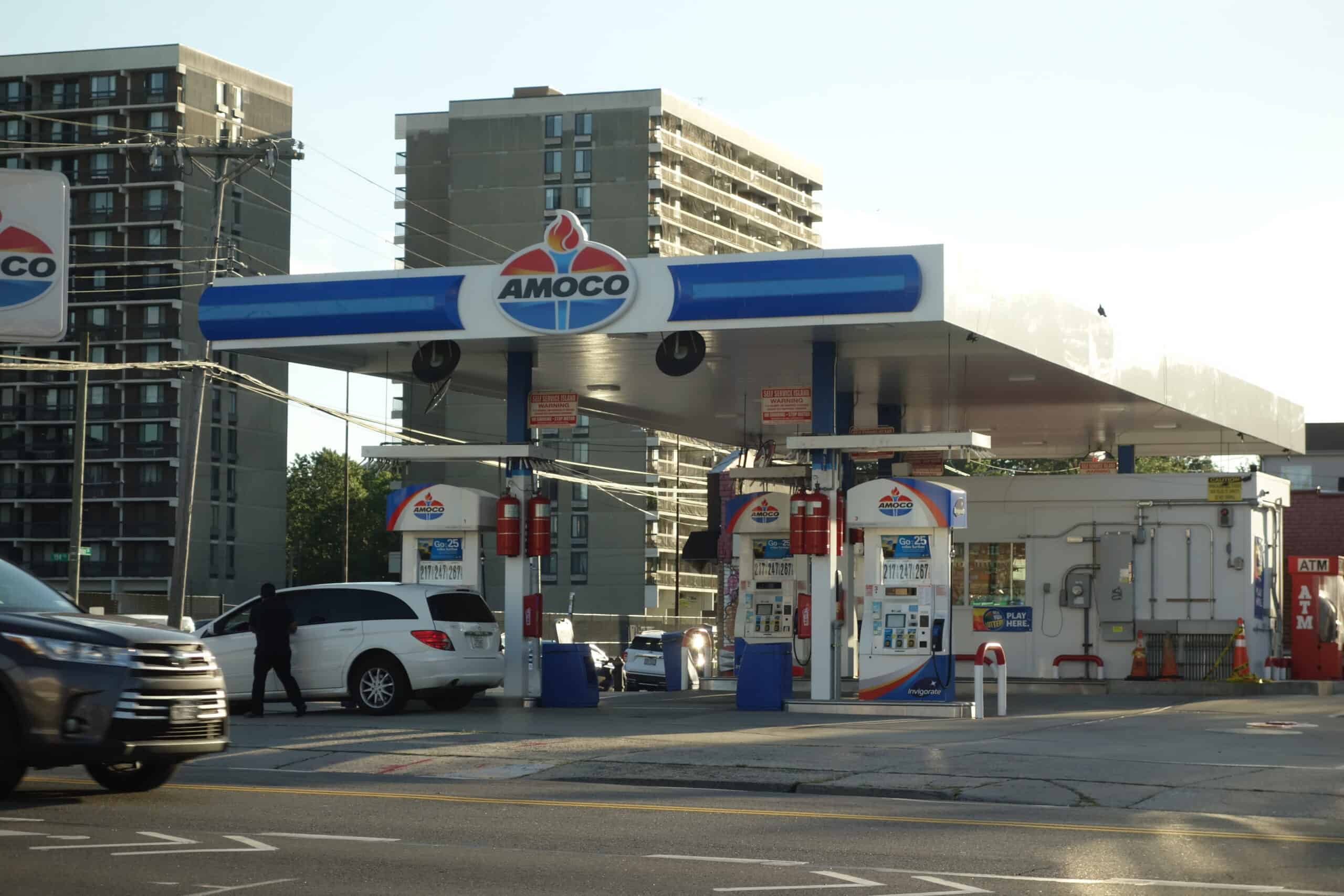
Amoco was another major player in the oil business during the 1980s and remains so to this day. It had some significant achievements during this period with investing in new drilling technologies to better optimize mining for oil.
Amoco also undertook some major initiatives throughout the 1980s to better protect the environment. Between pollution control techniques and investments in renewable energy, Amoco has been a steward of environmental benefits.

As one of the biggest entertainment and media brands, it’s no surprise to see CBS as a dominant corporation in the U.S. Throughout the 1980s, CBS had prime-time dominance with shows like Dallas, Dynasty, Murder She Wrote, and Magnum P.I. These episodes helped CBS stay at the top of the ratings.
Of course, shows like 60 Minutes also helped CBS continue to be a force in the news as well. Nightly news coverage of major events and breaking stories would help CBS enter more homes than ever. Events like the 1986 Challenger Shuttle Disaster were watershed moments for the CBS News division.
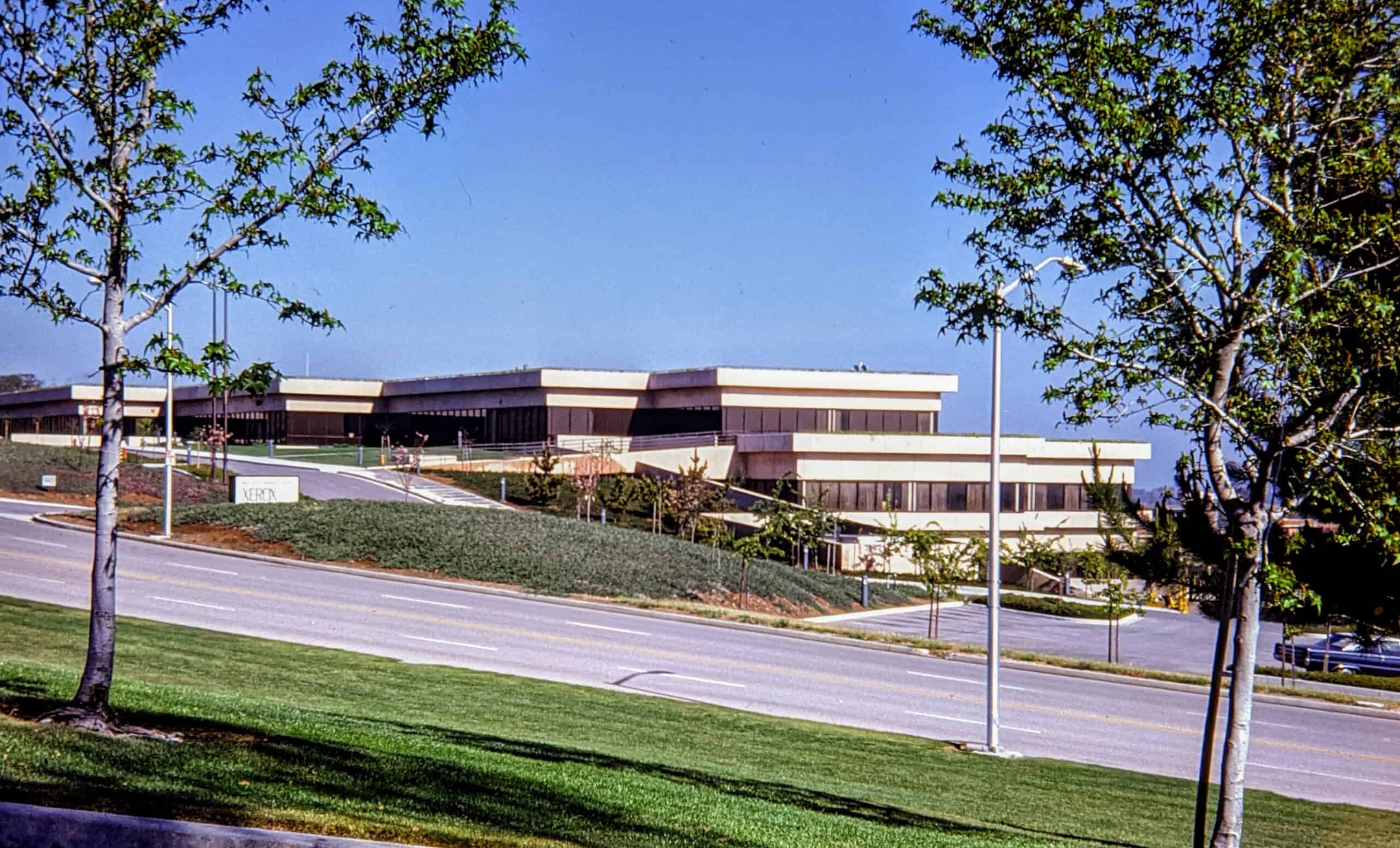
Xerox saw the 1980s as one of its biggest growth opportunities. Most notable is the widespread introduction of the laser printer. The adoption of this technology in the 1980s helped Xerox get into more businesses than ever before. The same can be said for office equipment like copiers and fax machines that helped drive global Xerox adoption.
Increasing competition did impact Xerox during the 1980s with bigger impacts around its non-core businesses. However, Xerox was able to maintain a strong market share and come out of the decade with a strong brand name and product lineup.
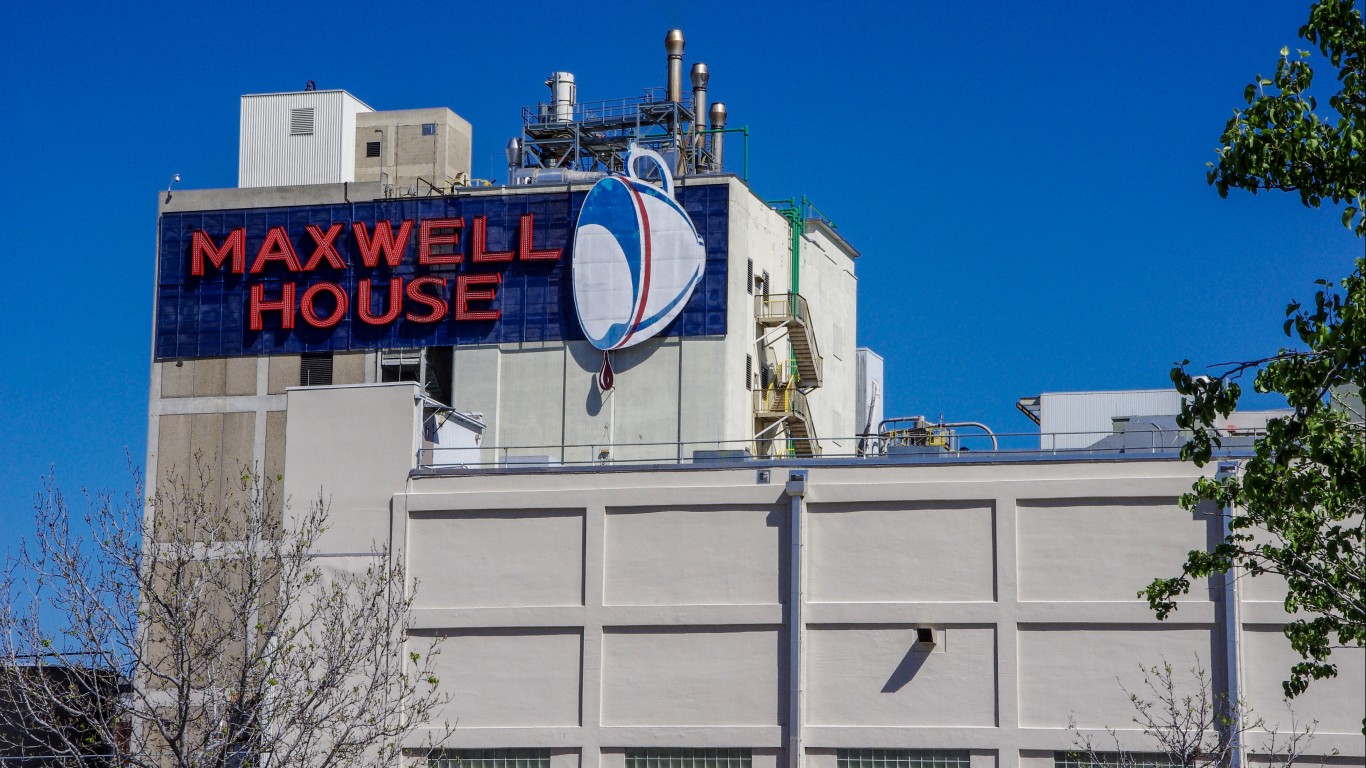
The 1980s was a big opportunity for General Foods as it gained a strong market share. Over the decade, General Foods introduced the popular Maxwell House Cappuccino, Kool-Aid Bursts, and Crystal Light powdered drink mix. More notably, General Foods introduced the “I Want My MTV” marketing campaigns for Post Cereals.
General Foods also used the 1980s to look at more healthy options for its popular items. Sugar-free Jello-O and reduced-fat recipes for Cool Whip and Country Time Lemonade were among the biggest healthier achievements.

The Pepsi brand needs little introduction as soda has been a staple American drink for decades. Pepsi took over in the 1980s with its restaurant buying spree. During the 1980s, Pepsi acquired KFC, Taco Bell and Pizza Hut. This not only gave Pepsi a more diverse revenue stream, but also ensured these brands only served Pepsi to its customers.
Along with its rapid growth, Pepsi jumped on the healthy hype train by introducing Diet Pepsi. Of course, Pepsi may be best known for some of its marketing campaigns during this era on MTV and Michael Jackson’s “Bad” World Tour.
If you’re one of the over 4 Million Americans set to retire this year, you may want to pay attention.
Finding a financial advisor who puts your interest first can be the difference between a rich retirement and barely getting by, and today it’s easier than ever. SmartAsset’s free tool matches you with up to three fiduciary financial advisors that serve your area in minutes. Each advisor has been carefully vetted, and must act in your best interests. Start your search now.
Don’t waste another minute; get started right here and help your retirement dreams become a retirement reality.
Thank you for reading! Have some feedback for us?
Contact the 24/7 Wall St. editorial team.